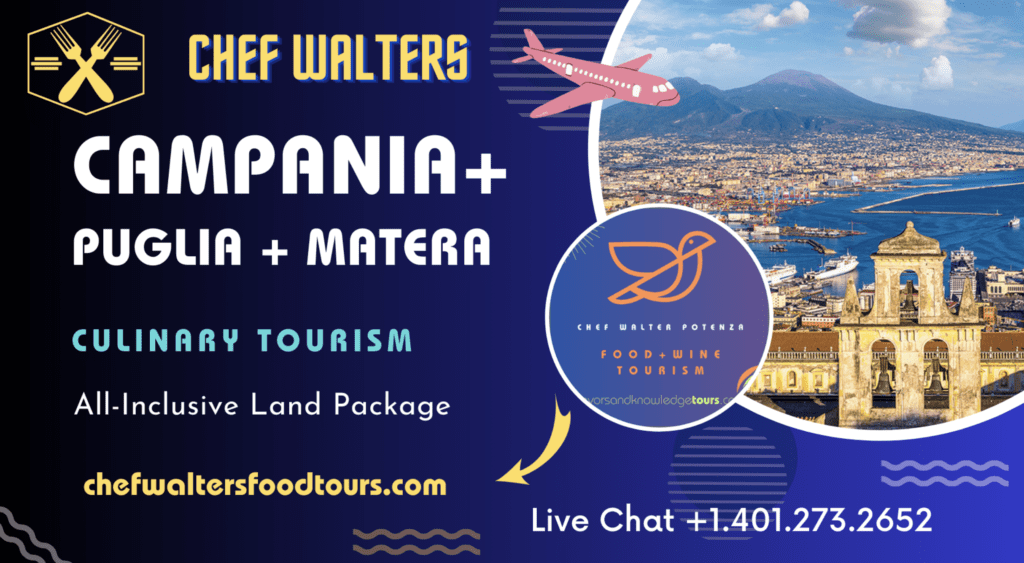Search Posts
Recent Posts
- RI Veterans: Did you know? 12.06.25 (Memorial Day, Vets Cemetery, Events, Resources) – John A. Cianci June 12, 2025
- We Cook! Mill’s Tavern’s Mediterranean Seared Salmon, Olive Tapenade, Artichoke Hearts, Roasted Red Pepper Tahini June 12, 2025
- Why more Rhode Islanders are choosing Heat Pumps over traditional AC this summer June 12, 2025
- CNAs to be trained at URI in administering medication in state facilities June 12, 2025
- Rhode Island Weather for June 12, 2025 – Jack Donnelly June 12, 2025
Categories
Subscribe!
Thanks for subscribing! Please check your email for further instructions.
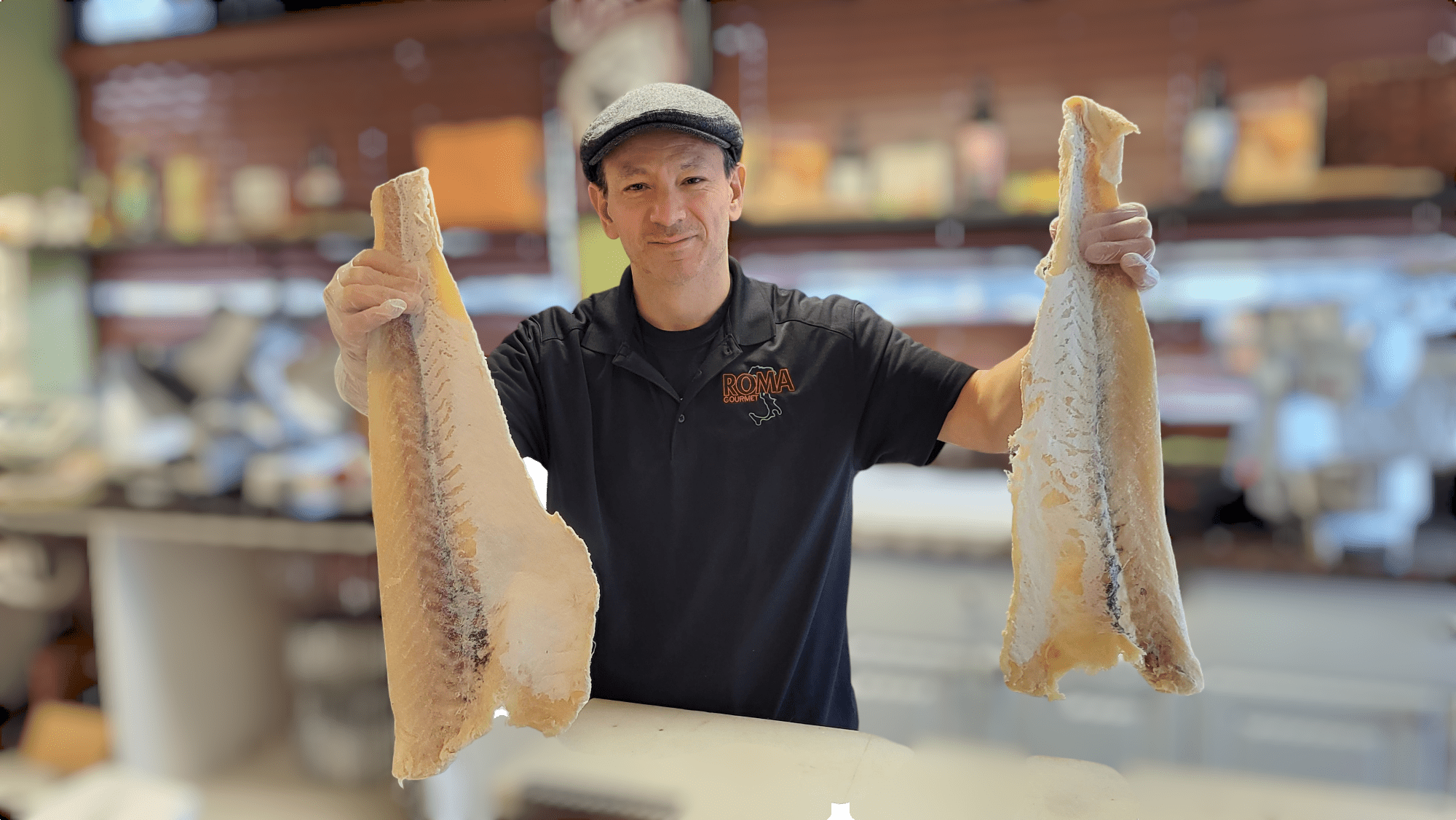
Ask Chef Walter: Baccalà Cooking Lesson – Chef Walter Potenza
by Chef Walter Potenza, contributing writer
Photo: Roma’s on Federal Hill, Providence Manager Oliver holding salted baccala’ in the store, courtesy Walter Potenza
Friends:
As we approach the solemn holidays, seafood symbolizes lean and devoted cuisines, especially in the Christian world. Many have asked about the salted cod, and here’s a brief guideline on how to deal with it, including a savory recipe.
Baccalà is much more than an ordinary delicacy-even a kind of culinary icon that ties together the histories of several countries: from the rough shores of Norway to the busy streets of Naples, this salted fish tells a story of ingenuity, endurance, and shared gastronomic tradition.
The origins of this remarkable product date back to the 15th century. During this era, adventurous Portuguese and Basque fishermen embarked on daring voyages into the vast expanse of the North Atlantic Ocean, drawn particularly to the rich waters off the coast of Newfoundland. There, they encountered massive shoals of cod, a fish celebrated for its delicate, lean flesh and firm texture, making it perfect for the intended preservation.
As these intrepid fishermen deftly navigated their expanding fishing grounds, they recognized that salting the cod was not merely a method of preservation but a crucial necessity for meeting the growing demand in European markets for this highly sought-after source of protein. Through their efforts, they contributed to a tradition that would sustain their communities and appetites across the continent.
By the beginning of the 16th century, salted cod had permeated most of Europe, especially Portugal, Spain, and Italy cuisines. It wasn’t only a product of necessity but also a strategic one: it could be preserved for several months and was used to supply seafarers and armies with food, becoming a fundamental food during religious fasting.
Portugal mainly provides over 1,000 recipes with ” bacalhau.” The use of this delicious product extends to Scandinavian, Caribbean, and Latin American cuisines.
To produce baccalà , fresh Atlantic cod (Gadus morhua) is cleaned, split, and salted. The fish is left to cure for several weeks, during which time the salt drawn out of the moisture from the fish inhibits bacterial growth and preserves the flesh. When it has reached a good level of dryness and salinity, baccalà is either marketed as is, dried, or slightly rehydrated.
Key steps to production:
Selection: The quality cod is firm in texture.
Curing by salting: the prepared fish are usually covered in generous layers of salt.
Drying: The salted fishes are usually air-dried; sometimes, they are kept in temperature-controlled conditions.
Rehydration: Salted cod needs to be soaked in water for 24 or 48 hours before cooking. Because of its high salt content, the water should be changed at intervals.
Since cod contains lean protein, omega-3 fatty acids, and low fat, baccalà is healthy. However, some attention has to be paid to its preparation because of salting. Therefore, soaking the fish just right turns it out rich and flavorful but not too salty. For 100 grams of salted cod, we are looking at 30 grams of protein, one to two grams of fat, and about 130 calories. The sodium content varies based on curing techniques.
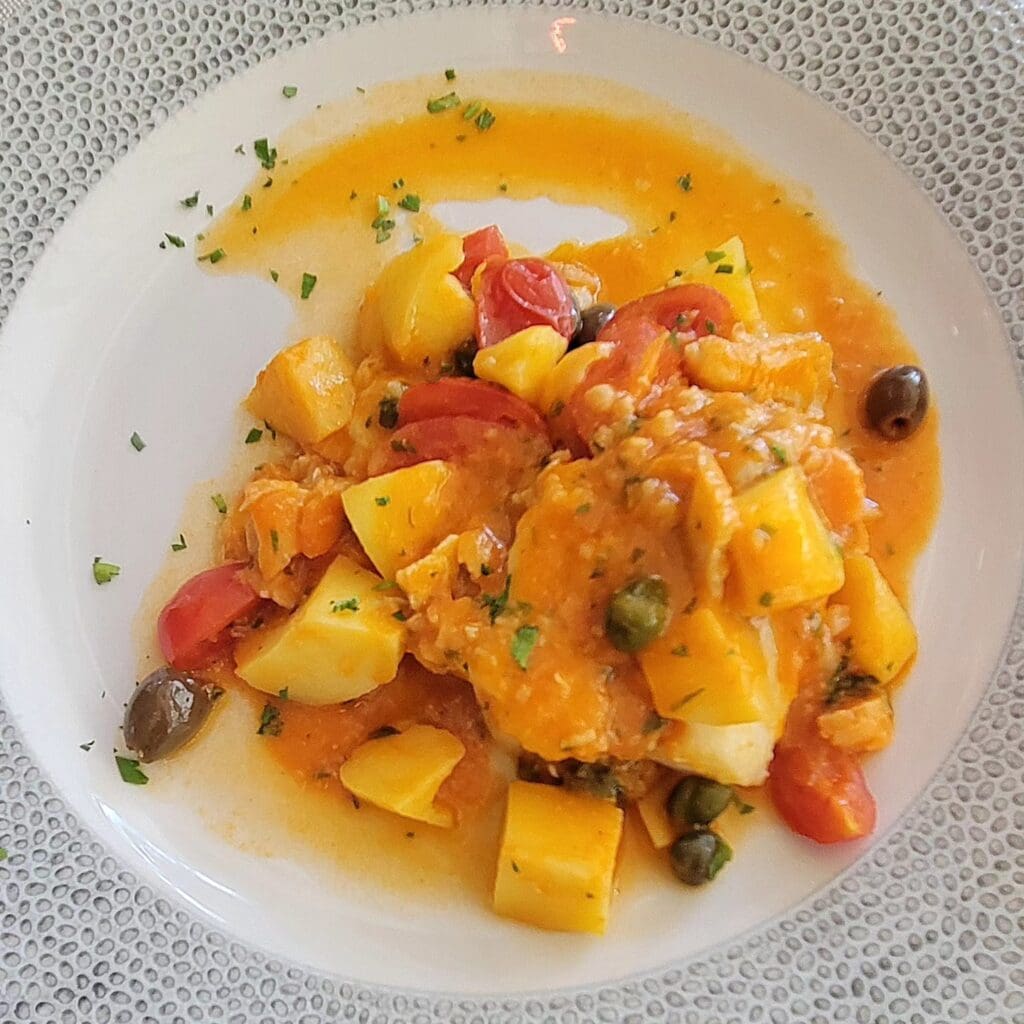
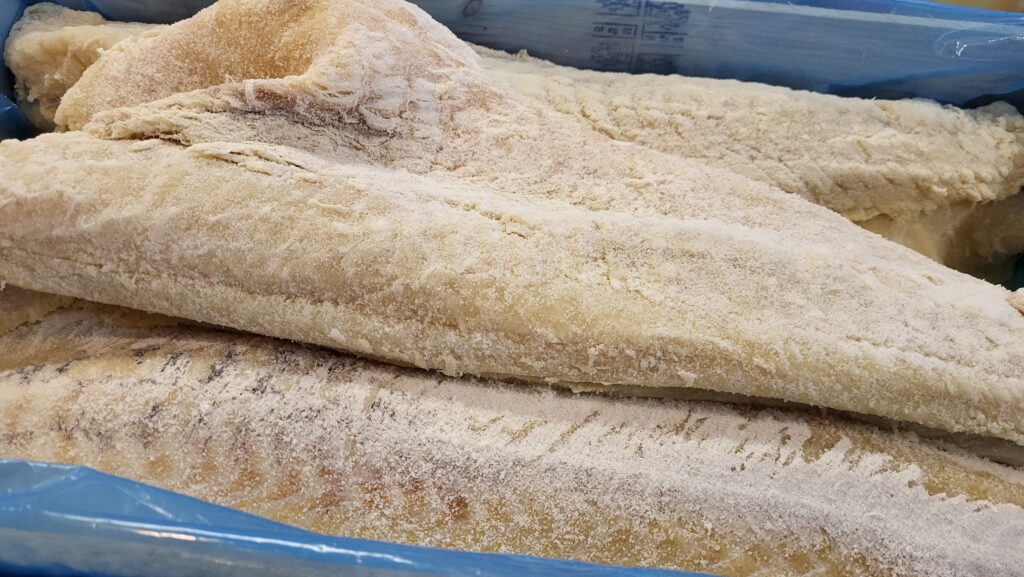
Here are some suggestions for selecting the finest Baccala’ as you approach the holidays.
1. Appearance
Color: High-quality baccalà should be pale ivory to light yellow. Avoid skin with dark or brown spots, which reflect oxidation or lousy manipulation. When lifted to light, the flesh should be firm but almost translucent rather than very dry, brittle, or flaky.
2. Smell
Mild Aroma: Good baccalà should have a fresh, salty, slightly oceanic smell. Any very smelly fish, like sour-smelling fish, should be avoided; it could be spoiled or wrongfully cured in the first place.
3. Size and Thickness
Standard Cuts: The desire is always for thick, even fillets. It retains moisture better through soaking; hence, it is cooked until tender. Thin cuts can lead to over-salting, and it may break. Whole fillets: These are preferred for the small bits since they are high-quality and can even be marinated.
4. Salt Content
Salt Crystals: A light dusting of salt is OK, but a high saltiness usually indicates bad curing practices. Loosen the loose salt by gently brushing before soaking.
5. Source and Origin
Label Information: Products labeled by their country of origin, such as Norway, Iceland, and Newfoundland, can be considered to have higher quality Atlantic cod. Baccalà , which originates from sustainability fisheries, should be selected. Check for MSC certifications by the Marine Stewardship Council.
6. Storage
Dry vs. Pre-soaked: Although dry baccalà may last longer, it does require intensive soaking. Pre-soaking saves time, but it should be used immediately and stored in the refrigerator. There should be good sealing, with no trace of moisture or mold inside. Check for the texture and appearance of buying from a reputable market that has already soaked the baccalà .
The flesh must appear plump, firm, and not slimy, and when gently pressed, it should spring back and not fall apart.
Lastly, Change fresh water every 6-8 hours while soaking dried baccalà for at least 24 to 48 hours to remove the extra salt and bring balanced flavor to your meal. Quality baccalà , selected and cooked well, offers the possibility of this dearly loved ingredient when appropriately used, enriching one’s gastronomic journey with the taste of tradition.
Baccala’ and potatoes image {Courtesy of Maryann Giustino}
Baccalà with Potatoes and Tomato-Baccalà alla Napoletana
This rustic yet elegant creation of southern Italy marries the richness of salted cod, the heartiness of potatoes, and the brightness of tomatoes.
Ingredients for two servings
One pound of salted cod/ baccalà soaked and desalted
Four large potatoes, peeled and sliced (Yukon Gold Brand)
1-1/2 cups of tinned tomatoes or fresh-skinned and chopped (San Marzano Type)
One medium onion sliced fine
Three garlic cloves, minced
Five tablespoons of extra-virgin olive oil
1/2 cup black olives, such as Gaeta or Kalamata
2 tbsp capers, rinsed
Fresh Parsley minced to garnish
Salt and pepper to taste
Directions:
Prepare the Baccalà : Drain the baccalà after soaking, pat it dry, and cut it into large pieces.
Sauté Aromatics: Heat the olive oil in a large skillet or Dutch oven over medium heat. Add the sliced onion and garlic, and cook until soft and fragrant.
Add Tomatoes: Stir in the tomatoes, breaking them up with a spoon. Simmer for 10-15 minutes until the sauce is reduced–season with salt sparingly and pepper.
Layer the Dish: Add the potato slices, ensuring they’re covered in the tomato sauce. Cook for 10 minutes to soften slightly.
Add Cod: Gently place the cod pieces on top of the potatoes. Scatter the olives and capers around the fish. Then cover and cook for 20-25 minutes, or until the fish is flaked and potatoes are tender.
To Finish and Serve: Season if needed. Garnish with fresh parsley. Serve warm with crusty bread.
Final thought
The story of baccalà is one of endurance-from the nearly icy tides of the Atlantic right to the heart of warm Mediterranean cuisine. In modern times, its continuity is a statement of ingenious ways of preservation and appeal of simple, healthy flavor. Baccalà is a favorite link between the past and present, combined in a festive Italian meal or gracing the holiday table of a Portuguese family.

___
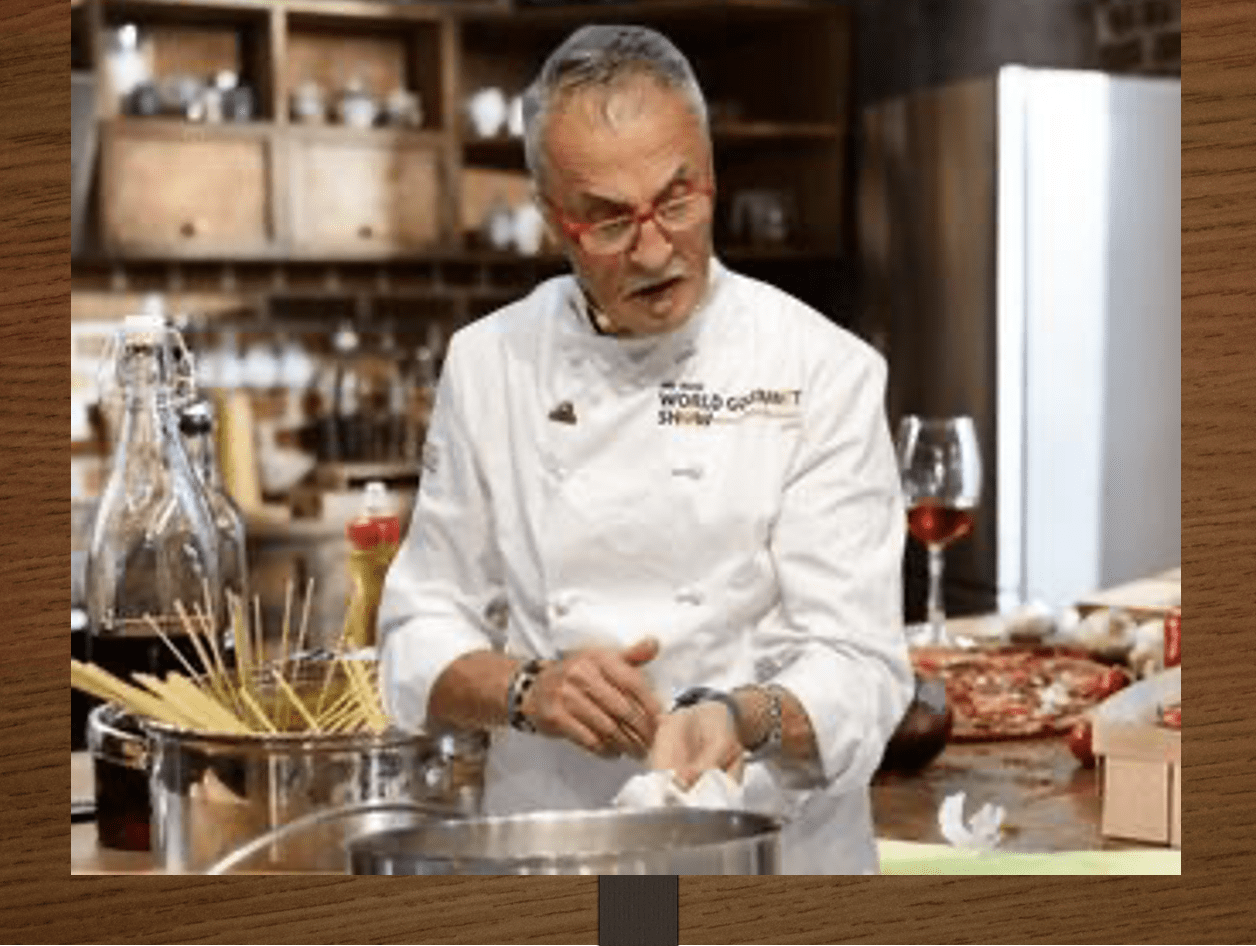
Meet Chef Walter!
There is a constant, recognizable thread in the career of Walter Potenza to elevate the level of Italian culinary culture in the United States. Besides his unquestionable culinary talent and winning business perspective, Chef Walter has been a relentless educator with passion and knowledge who defeats stereotypes. His life, career, and values are a model, an example to follow by any chef of Italian gastronomy working outside Italy.
Chef Walter appears regularly on National and International Networks such as Food Network, ABC, CBS, NBC, RAI, FOX, and Publications such as NY. Times, Washington Post, Wall Street Journal, Food & Wine, Saveur, Gourmet, and several Italian media outlets. And now – RINewsToday!

